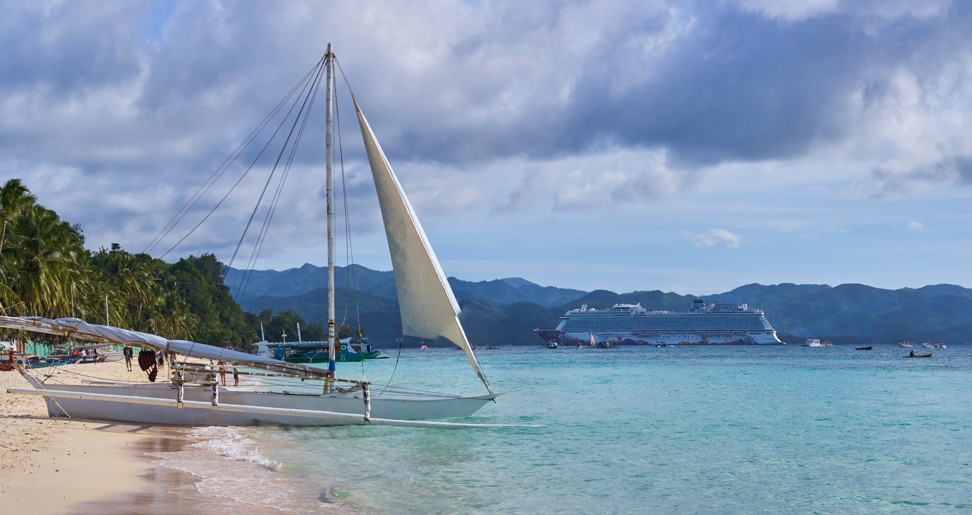
How ‘the China tourism miracle’ has boomed over the past 20 years
- Until 1997, Chinese travel was restricted to select countries and available only to those in positions of privilege
- That 140 million overseas trips were made from the Middle Kingdom last year shows how far a nation can go in two decades
Cast your mind back 20 years: Google was in its infancy; Blockbuster ruled the film-rental market as start-up Netflix struggled to be noticed and Chinese tourists were nowhere to be seen. Compare that with the staggering statistics achieved last year, when more than 140 million outbound trips were made by mainland travellers. Oh, and Google and Netflix weren’t doing too badly, either.
Although their rise was not unforeseen – “China could [emphasis ours] move into fourth place in the outbound travel market by 2020, behind Germany, Japan and the United States” reported the World Tourism Organisation (WTO) in 1998 – digital marketing agency Dragon Trail Interactive has called the growth in international travellers from the Middle Kingdom “the China tourism miracle”. And while destinations from Boracay to Kyoto – not to mention professional grumbler Jeremy Clarkson, Swedish hotel staff and countless ranting Redditors – might quibble with the phenomenon’s nomenclature, the “flood” (it’s been called worse) of Chinese travellers has changed the world as we know it.
Before Deng Xiaoping’s “reform and opening up” policies were introduced, in 1978, leisure travel, even within China, was scoffed at as a wasteful, bourgeois activity. Overseas adventures were unimaginable. Trips organised by the state-owned China Travel Service were allowed to select countries in Southeast Asia from the early 1990s, but it wasn’t until later in the decade that Chinese citizens were gradually permitted to roam further afield. As Wolfgang Georg Arlt writes in his 2006 book, China’s Outbound Tourism, the cost of self-paid travel put it out of reach for the vast majority in those early years of authorised exploration.
The first wave of border crossers did so on group package tours, because that was all that was available to them, and it is this image of the flag-following, rabble-rousing, coach-hopping mainland Chinese tourist that endures, despite a second wave of more sophisticated globetrotters, which Asia Dialogue, the online magazine of the University of Nottingham’s Asia Research Institute, in Britain, identifies as “middle-aged people who were well educated, earning a high salary, and had previous international travel experience”. We have now welcomed the third wave, determined by Asia Dialogue as “upper-class and middle-aged”, although this classification seems to ignore the free independent travellers, a millennial-led group of increasingly intrepid wanderers.

It’s not all bad, though. The tourist yuan is welcome (even if those who spend it are not) and mobile payment platforms such as Alipay and WeChat Pay, which facilitate consumerism, are near ubiquitous across Asia and are enjoying a growing presence globally, from Australian taxis to Canadian convenience stores. Cultural exchange has, to an extent, blossomed and destinations from the Scottish highlands to restaurants in Israel have sought Mandarin speakers and chefs to cater to their newest arrivals.
Perhaps other hotspots should take note; to quote Joni Mitchell, “You don’t know what you’ve got till it’s gone.”
Boracay bans cruise ships during peak seasons

Speaking to Philippine daily Tempo, Helen Catalbas, a regional director at the Department of Tourism, said: “We will enforce a policy banning cruise ships during peak seasons such as Chinese New Year, Holy Week, summer, All Saints’ Day, All Souls’ Day and Christmas.” Blackout periods apply to vessels that ferry 2,000 passengers or more.
The newspaper reports that since Boracay reopened to tourists last October, only four cruise ships have dropped anchor at the resort island’s port, although Crew-center.com, which features cruise itineraries and port calenders, suggests that as many as 12 have called at the island since January.
Thailand’s coral reefs a victim of Songkran festivities

The underwater world of Trang, in southern Thailand, is still considered one of the nation’s better-kept secrets – or at least it was until an influx over the recent Songkran holiday left its coral reefs in a sorry state, according to news site The Thaiger, which credits Thai-language daily Matichon with reporting.
Boats mooring in Hat Chao Mai National Park, a protected marine park, allegedly dropped their anchors onto the reefs, with some even tying ropes around corals in the absence of buoys. Speaking to online news platform Khaosod English, Somsak Pantumet, president of Trang’s tour guide association, said that the worst affected area was off Koh Kradan, where 500 metres of reef was damaged.
The park received almost 14,000 tourists from April 12 to 16, whereas visitor numbers on a typical weekend rarely reach higher than 600 in a day.

